Instructions for Side by Side Printing
- Print the notecards
- Fold each page in half along the solid vertical line
- Cut out the notecards by cutting along each horizontal dotted line
- Optional: Glue, tape or staple the ends of each notecard together
Alkens alkynes
front 1 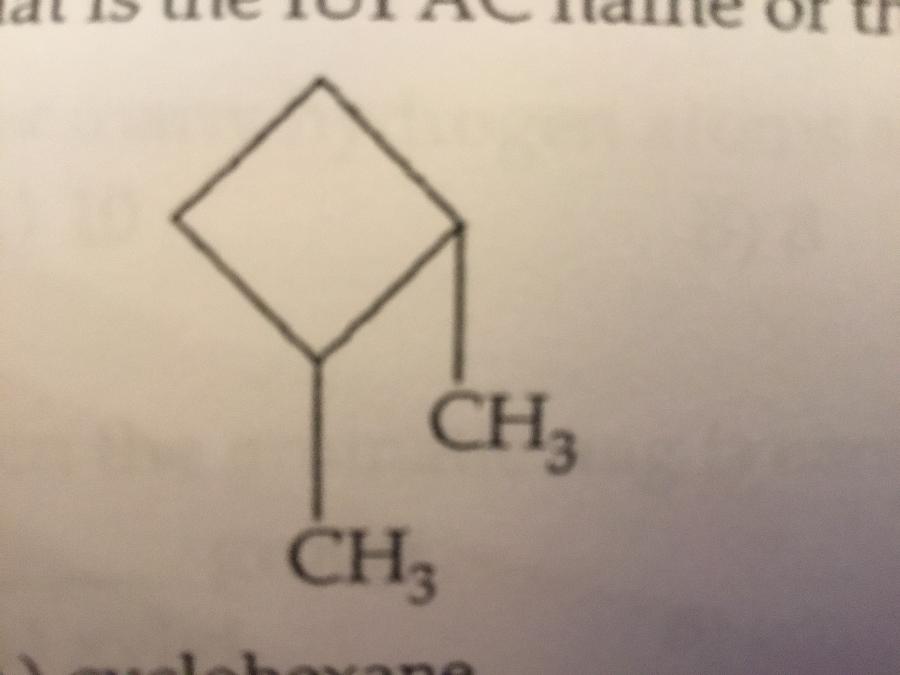 What is the IUPAC name of the molecule shown? A. Cyclohexane B. 3,4-dimethylcyclobutane C. Dimethylcyclobutane D. 2,3-dimethylcyclobutane E. 1,2-dimethylcyclobutane | back 1 E. 1,2-dimethylcyclobutane |
front 2  What is the IUPAC name of the compound shown? a. Heptane B. 2,2-dimethylpentane c. 1,1,1-trimethylbutane d. 2-dimethylpentane e. 2-ethylhexane | back 2 B. 2,2-dimethylpentane |
front 3 The functional group illustrated by R-O-R’ is an. A. Alcohol B. Aldehyde C. Ester D. Ether E. Alkyl | back 3 D. Ether. |
front 4  Which compound shown it the most soluble in water? | back 4 E. |
front 5 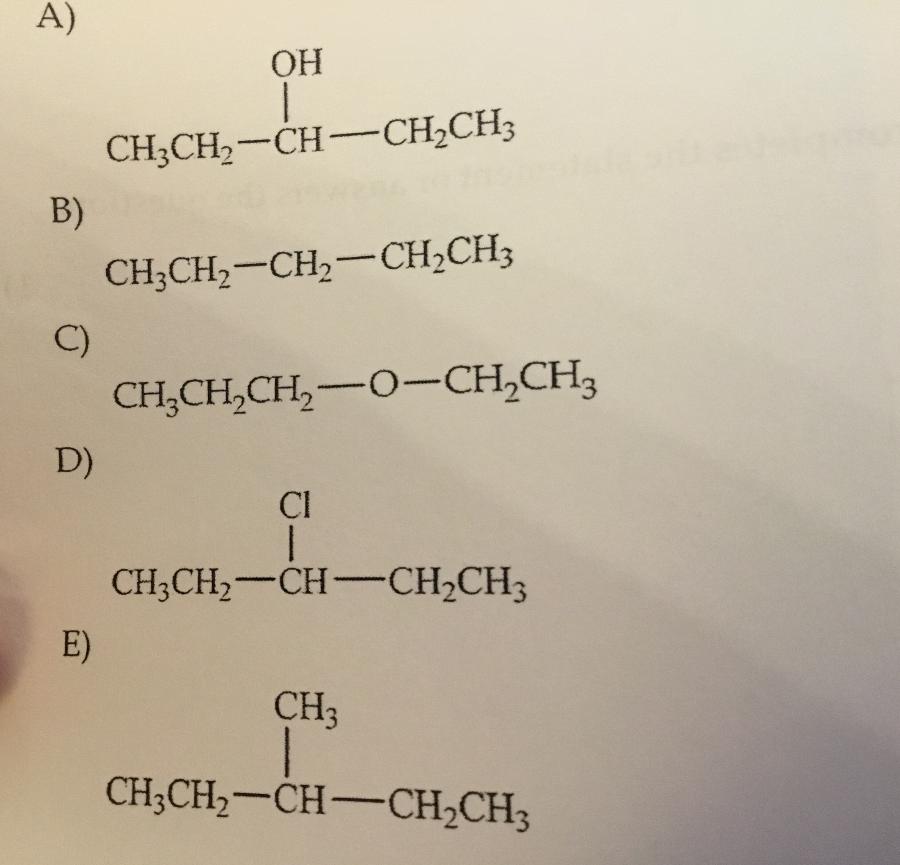 Which compound shown has the highest boiling point? | back 5 A. |
front 6 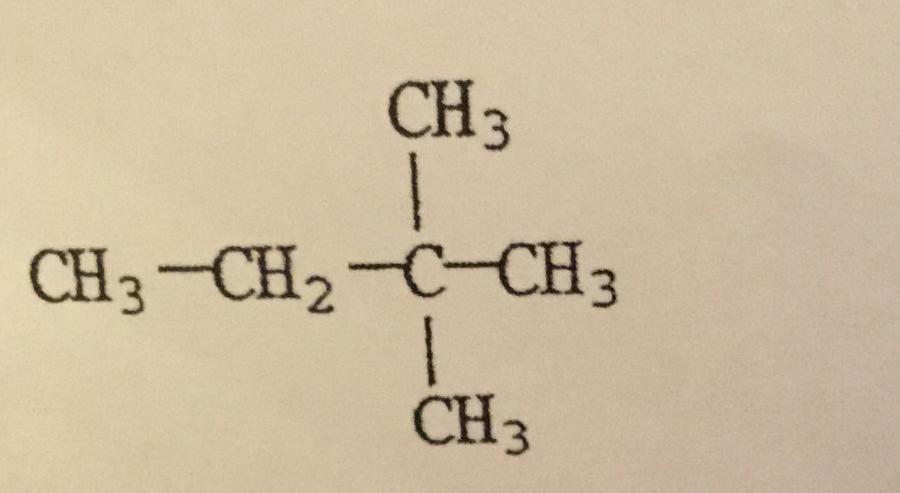 What is the IUPAC name of the compound shown? A. Hexane B. 2,2-dimethylbutane C. Isohexane D. Ethylmethylpropane E. Dimethylbutane | back 6 B. 2,2-dimethylbutane |
front 7 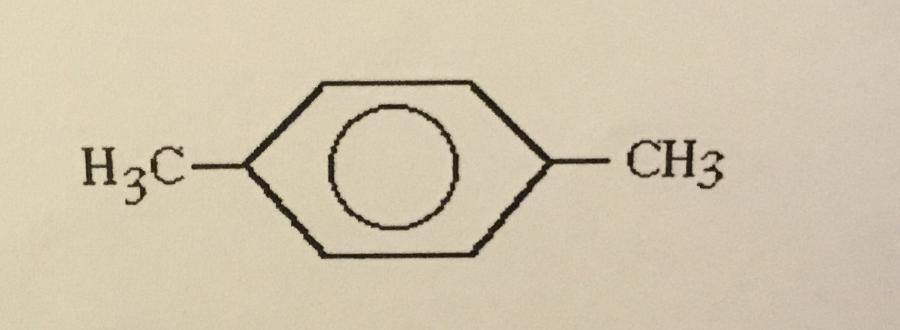 What is the systematic name of the structure shown? A. 1,3-dimethylbenzene B. Ortho-dimethylbenzene C. Meta-dimethylbenzene D. 1,2-dimethylbenzene E. Para-dimethylbenzene | back 7 E. Para-dimethylbenzene |
front 8 The relatively high boiling point of alcohols in relation to their molecular weight is the result of _______. A. Hydrogen bonding B. Diplomat forces C. Ionic bonding D. London forces E. Covalent bonding | back 8 A. Hydrogen bonding. |
front 9 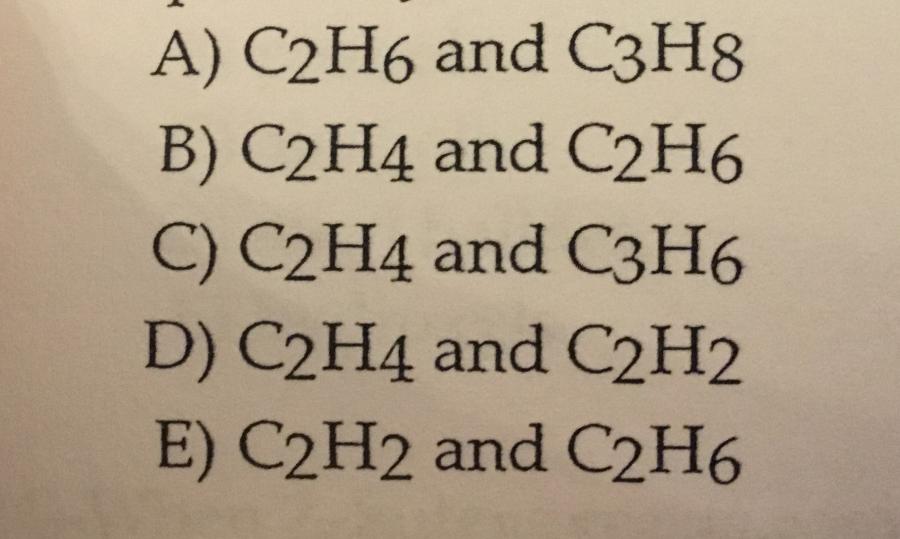 Ethylene and acetylene are the common names of the molecules _______ and ________. | back 9 D. |
front 10 How many hydrogen atoms are contained in a molecule of cyclopentene? A. 10 B. 8 C. 12 D. 5 E. 6 | back 10 B. 8 |
front 11 When the aromatic ring is named as a side chain or functional group, it is referred to as the _______ group. A. Xylyl B. Benzyl C. Toluyl D. Phenyl E. Benzoyl | back 11 D. Phenyl |
front 12 Chemical reactions involving double bonds and generally referred to as ______ reactions. A. Combustion B. Oxidation C. Reduction D. Addition E. Substitution | back 12 D. Addition reactions |
front 13 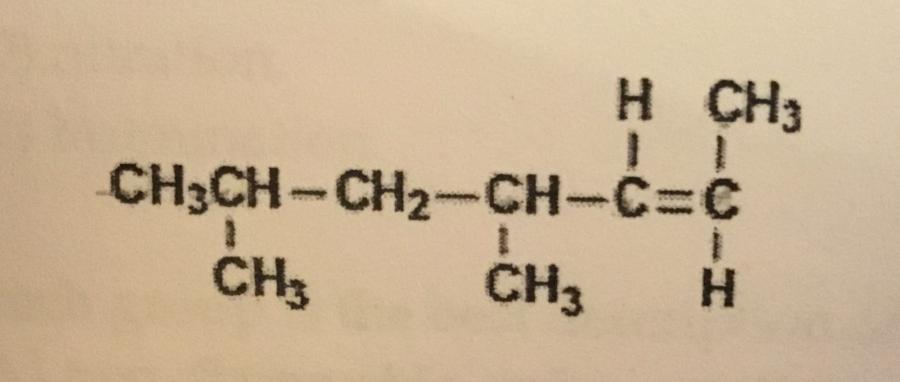 What is the IUPAC name of the compound shown? A. Cis-4,6-dimethyl-2-heptene B. Cis-2-nonene C. Trans-4,6-dimethyl-2-heptene D. Trans-2-nonene E. Trans-2,4-dimethyl-5-heptene | back 13 C. Trans-4,6-dimethyl-2–heptene |
front 14 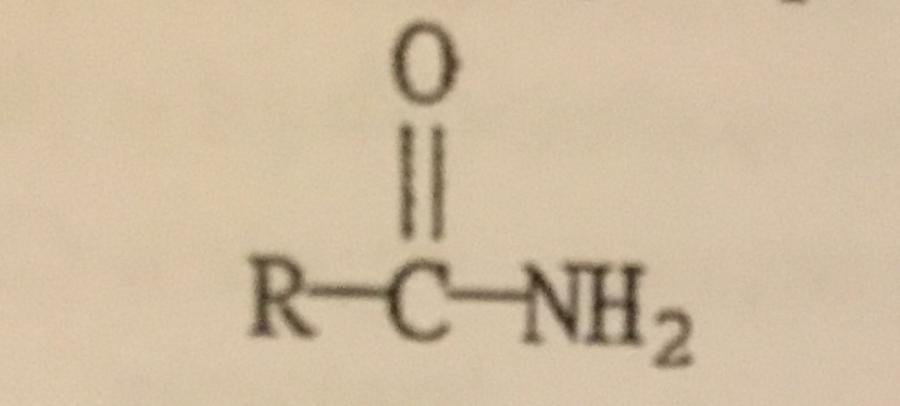 The functional group illustrated is an ______. A. Alcohol B. Amine C. Ether D. Amide E. Ester | back 14 D. Amide |
front 15 Which compound is a tertiary alcohol? A. 3-methyl-2-hexanol B. 3-hexanol C. 2-methyl-1-hexanol D. 2-methyl-2-hexanol E. 1-propanol | back 15 D. 2-methyl-2-hexanol |
front 16 Compounds with an oxygen atom bonded to two organic groups are known as _____. A. Phenols B. Hydroxides C. Hydroxyls D. Ethers E. Alcohols | back 16 D. Ethers |
front 17 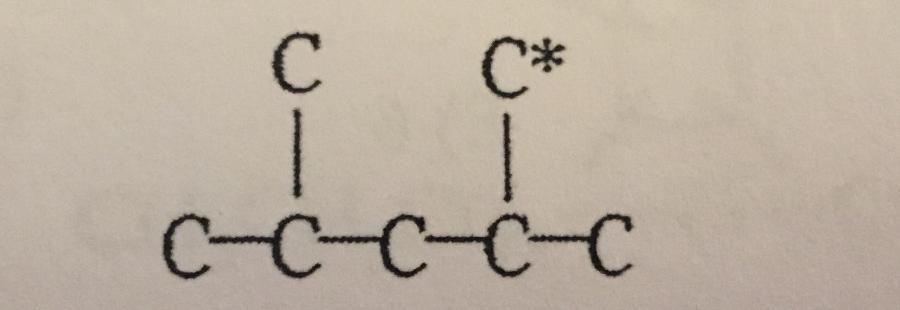 In the carbon skeleton shown, how many hydrogen atoms are bonded to the C* carbon? A. 0 B. 1 C. 2 D. 3 E. 4 | back 17 D. 3 |
front 18 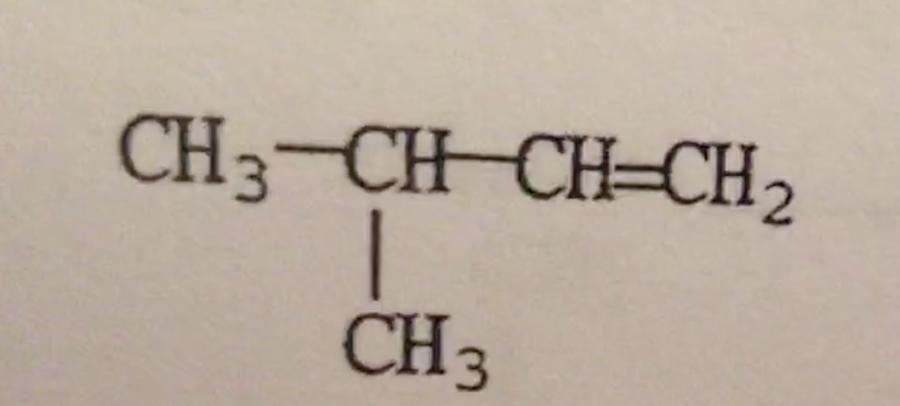 What is the IUPAC name of the compound shown? A. 3-methyl-1,2-butene B. 1,1-dimethyl-2-propene C. Isopentene D. 2-methyl-3-butene E. 3-methyl-1-butene | back 18 E. 3-methyl-1-butene |
front 19 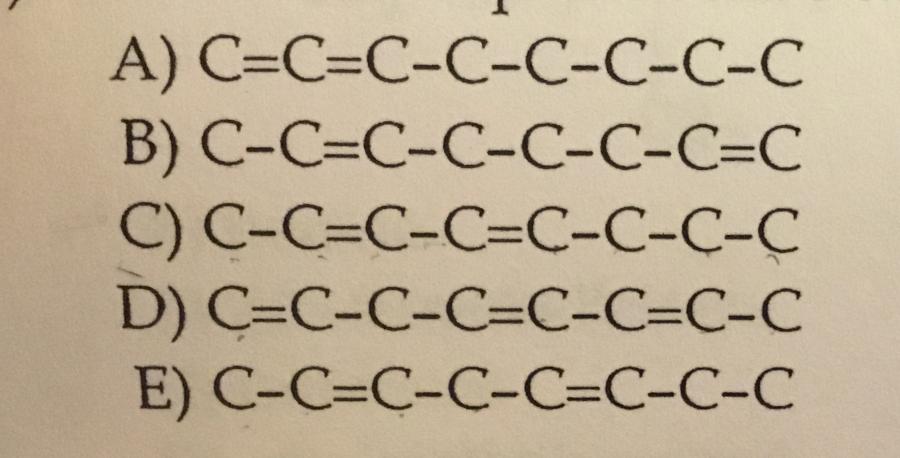 Which choice represents the carbon skeleton of 2,4-octadiene? | back 19 C. |
front 20 Treatment of CH3CH2CH2OH with a limited amount of oxidizing agent will produce, A. No reaction B. An alkene C. A crboxylic acid D. A ketone E. An aldehyde | back 20 E. An aldehyde |
front 21 Which family of organic molecules is a hydrocarbon? A. Aromatic B. Aldehyde C. Amine D. Amide E. Alcohol | back 21 A. Aromtic |
front 22 The common name of CH2(OH)CH2OH is A. Glycerol B. Grain alcohol C. Wood alcohol D. Rubbing alcohol E. Ethylene glycol (antifreeze) | back 22 E. Ethylene glycol |
front 23 Compounds with the -OH group attached to a saturated alkane-like carbon are known as A. Ethers B. Phenols C. Alcohols D. Alkyl halides E. Hydroxyls | back 23 C. Alcohols |
front 24 When 2-butene reacts completely with bromine, the product is, A. 1,3-dibromobutane B. 1,2-dibromobutane C. 2-bromobutane D. 3-bromobutane E.2,3-dibromobutane | back 24 E. 2,3-dibromobutane |
front 25 When phenol acts as an acid, a _______ ion is produced. A. Phenolic B. Benzyl C. Phenoxide D. Phenyl E. Phenolate | back 25 C. Phenoxide ion |
front 26 The alcohol which contains two carbon atoms and has the common name of grain alcohol is, A. Methanol B. Glycol C. Glycerol D. Ethanol E. Phenol | back 26 D. Ethanol alcohol |
front 27 All of the following are common reactions of benzene except. A. Sulfonation B. Hydrogenation C. Chlorination D. Nitration E. Bromination | back 27 B. Hydrogenation |
front 28 Which best describes the properties of alkanes? A. Non-flammable, polar, reactive B. Flammable, reactive, water soluble C. Flammable, non-reactive, insoluble in water D. Non-flammable, non-polar, water soluble E. None of the above. | back 28 C. Flammable, non-reactive, insoluble in water. |
front 29 A substitution reaction can be best described as a reaction in which, A. Two reactants combine to form one new product with no extra atoms. B. A hydrocarbon reacts with oxygen to produce CO2, H2O and energy. C. A single reactant undergoes reorganization of its chemical. Bonds, producing an isomer of the reactant. D. Two reactants exchange atoms to give two new products. E. A single reactant splits into two products. | back 29 D. Two reactants exchange atoms to give two new products |
front 30 Which atom is MOST likely to form a polar covalent bond with carbon? A. Na B. O C. S D. C E. H | back 30 B. O |
front 31 All of the following are general properties of alkenes except. A. Soluble in non-polar (organic) solvents. B. May exist as cis-trans isomers. C. Less reactive than the corresponding alkanes. D. Low boiling points. E. Flammable. | back 31 C. Less reactive |
front 32 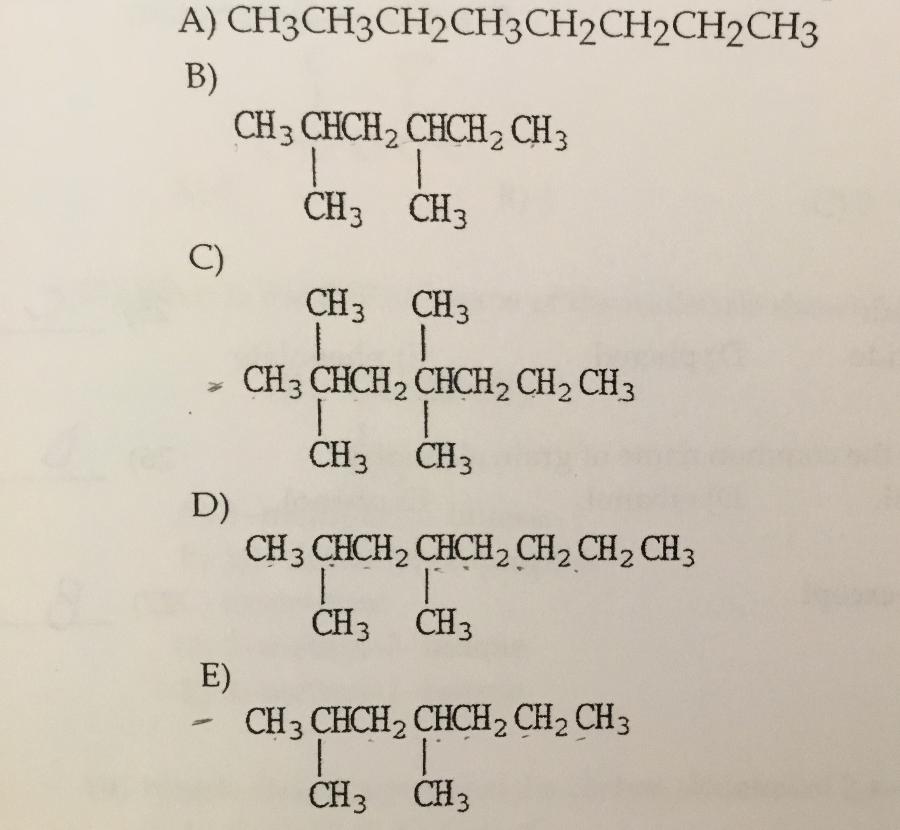 Which compound shown is the condensed structure of 2,4-diemethylheptane? | back 32 E. |
front 33  What is the IUPAC name of the compound shown? A. 2-thiobutane B. 3-thiobutanol C. 1-methyl-1-propanethiol D. 2-butanethiol E. 1-methyl-1-thiopropane | back 33 D. 2-butanethiol |
front 34 Alkanes are ______ in water and ______ than water. A. Insoluble; less dense B. Soluble; less dense C. Soluble; more dense D. Insoluble; more dense | back 34 A. Insoluble; less dense |
front 35 All of the following statements are general properties of organic compounds except, A. They have relatively low boiling points. B. They have limited or no water solubility C. They have relatively low melting points. D. They usually behave as electrolytes in solution. E. The bonds are covalent | back 35 D. They usually behave as electrolytes in solution. |
front 36 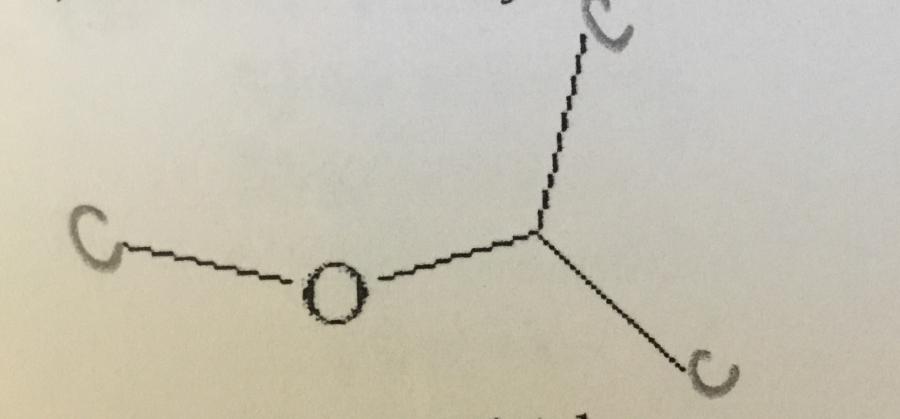 What is the systematic name of the compound shown. A. Diethyl ether B. 2-ethoxy propane C. 2-methoxy propane D. Ethyl methyl ether | back 36 C. 2-methoxy propane |
front 37 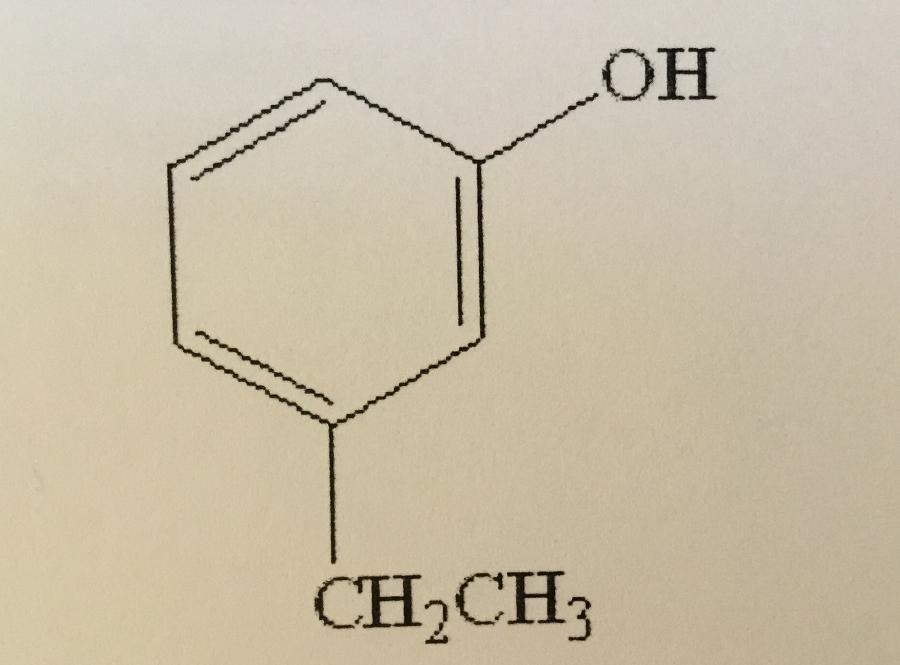 Name the compound shown. A. M-ethylphenol B. O-ethylphenol C. P-ethylphenol D. M-ethylbenzene | back 37 A. M-ethylphenol |
front 38 In organic chemistry, the term ”unsaturated” means a molecule, A. With a specific six-membered ring structure. B. That is formed from many smaller molecules. C. That contains one or more multiple bonds between carbon atoms. D. That can reac by taking up one or more water molecules. E. That has the maximum number of carbon-hydrogen bonds possible. | back 38 C. |
front 39 When an alkene undergoes a hydration reaction the product is an, A. Alkane B. Aromatic C. Alcohol D. Ether E. Alkyne | back 39 C. An alcohol |
front 40 The major produc obtained from dehydration of 2-hexanol is, A.2-hexanal B. 2-hexene C. 1-hexene D. 3–hexene E. 2-hexanone | back 40 B. 2-hexene |
front 41  What is the IUPAC name of the compound shown? A. Butanetriol B. 1,2,4-butanetriol C. 1,3,4-butanetriol D. 2-hydroxy-1,4-butanediol E. Butylene glycol | back 41 B. 1,2,4-butanetriol |
front 42  What is the IUPAC name of the compound shown? A. 4,4-diethyl-1-butanol B. 3-ethyl-1-hexanol C. 3-ethyl-6-hexanol D. Isooctanol E. 4-ethyl-1-hexanol | back 42 E. 4-ethyl-1-hexanol |
front 43 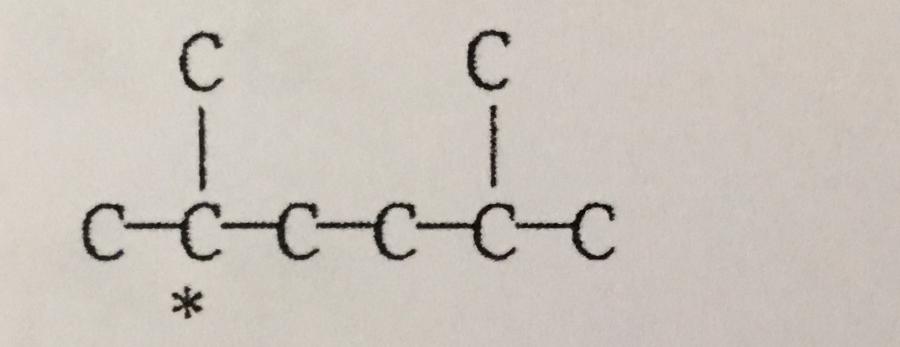 The C* is the ______ carbon atom. A. Secondary B. Tertiary C. Primary D. Quaternary E. None of the above. | back 43 B. Tertiary. |
front 44 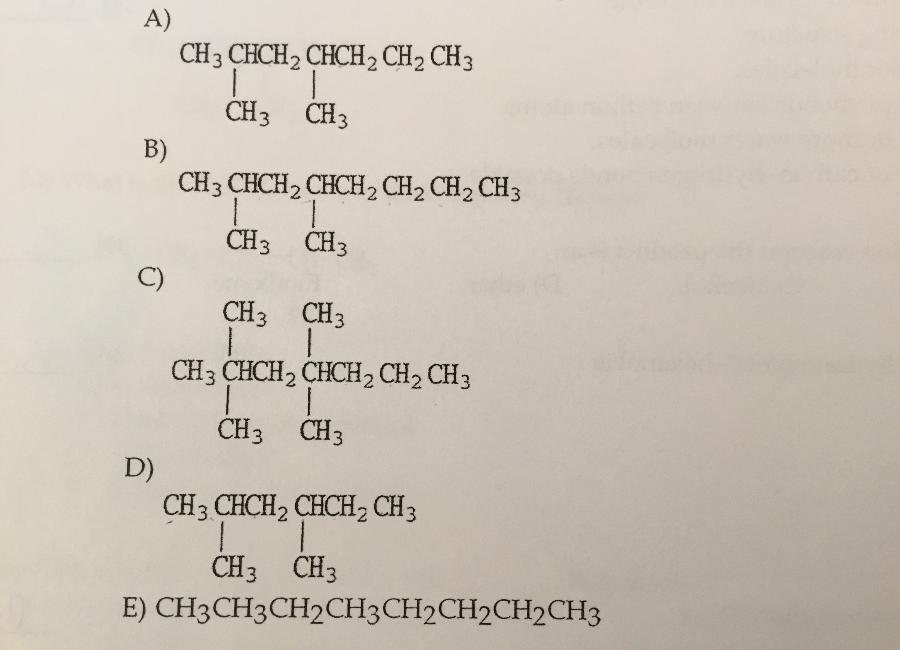 Which is the condensed structure of 2,4-diemethylhexane? | back 44 D. |
front 45 When an alkane reacts with an element from group 7A, the reaction is referred to as, A. Oxidation B. Halogenation C. Decomposition D. Combustion E. Displacement | back 45 B. Halogenation |
front 46 When a think is oxidized the product is, A. An aldehyde B. A disulfide C. Sulfuric acid D. A ketone E. An alkene | back 46 B. A disulfide |
front 47 Organic compounds which are sulfur analogs of alcohols are referred to as, A. Thiols B. Sulfuric alcohols C. Disulfides D. Halides E> carbonyls | back 47 A. Thiols |